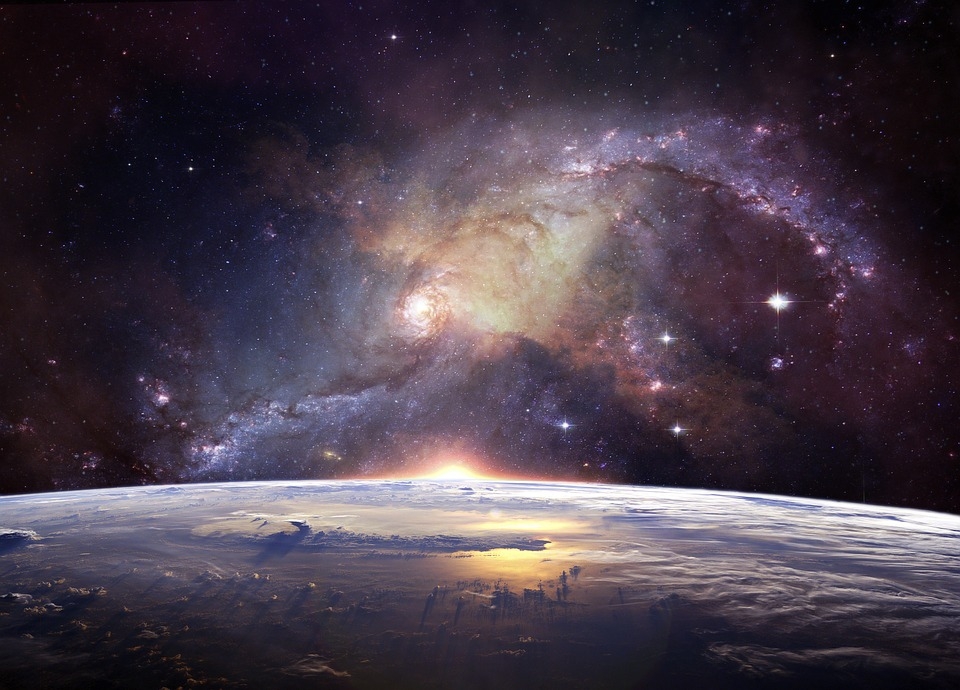The search for life beyond Earth continues, and astronomers have recently discovered what may be the blinking lights seen from the sky and throughout the galaxy. The scientists believe that it may be a form of communication among aliens from one galaxy to another.
Express reports that a group of astronomers discovered hundreds of stars that are seemingly blinking throughout the galaxy. The astronomers believe that the blinking lights that they now refer to as “red transients” may be astrophysical sources. They have yet to explain what these lights are, even after analyzing data from as far back as 50 years ago. This led the experts to believe that these lights may be a method of communication used by life forms that exist beyond the galaxy and the planet.
Another possibility would be signs of alien structures or Dyson spheres. Dyson spheres surround a star and use its energy to provide energy for a whole solar system. From the 150,000 stars, the researchers from VASCO or Vanishing and Appearing Sources during a Century of Observations, deduce that 100 of these stars are blinking. But this theory has yet to be verified, and thus, the organization is opening this to the public who may be able to help.
But if there is something to take from previous predictions about finding aliens, it may not be the best time at the moment. Even the late Stephen Hawking has said that contacting aliens might be a challenge.
Meanwhile, Space has previously reported about the discovery of an exoplanet orbiting a white dwarf, which is also known as a dead star. According to Boris Gaensicke of the University of Warwick, this discovery means progress because of the increasing evidence showing that planets can still survive when orbiting around dead stars. “Having evidence for an actual planet that itself was scattered in is an important step,” said Gaensicke.
It is a known fact that most of the stars in our galaxy, including the sun, will somehow end up as white dwarfs, progressing from red giants when these stars have used up their nuclear fuel. The only exception to this would be really big stars, which can go supernova when they die, the remains of these stars would end up turning into black holes or neutron stars. Similarly, neutron stars can also host planets.



 How do airplanes fly? An aerospace engineer explains the physics of flight
How do airplanes fly? An aerospace engineer explains the physics of flight  Synthetic human embryos let researchers study early development while sidestepping ethical and logistical hurdles
Synthetic human embryos let researchers study early development while sidestepping ethical and logistical hurdles  What is minoxidil, the anti-balding hair growth treatment? Here’s what the science says
What is minoxidil, the anti-balding hair growth treatment? Here’s what the science says  Customizing mRNA is easy, and that's what makes it the next frontier for personalized medicine − a molecular biologist explains
Customizing mRNA is easy, and that's what makes it the next frontier for personalized medicine − a molecular biologist explains  The brightest object in the universe is a black hole that eats a star a day
The brightest object in the universe is a black hole that eats a star a day  Why now is the time to address humanity’s impact on the moon
Why now is the time to address humanity’s impact on the moon  Our survey of the sky is uncovering the secrets of how planets are born
Our survey of the sky is uncovering the secrets of how planets are born  Why is the universe ripping itself apart? A new study of exploding stars shows dark energy may be more complicated than we thought
Why is the universe ripping itself apart? A new study of exploding stars shows dark energy may be more complicated than we thought  Six space missions to look forward to in 2024
Six space missions to look forward to in 2024  Could a telescope ever see the beginning of time? An astronomer explains
Could a telescope ever see the beginning of time? An astronomer explains  Alpha, beta, theta: what are brain states and brain waves? And can we control them?
Alpha, beta, theta: what are brain states and brain waves? And can we control them?  Spacesuits need a major upgrade for the next phase of exploration
Spacesuits need a major upgrade for the next phase of exploration  Black hole, neutron star or something new? We discovered an object that defies explanation
Black hole, neutron star or something new? We discovered an object that defies explanation  The brain is the most complicated object in the universe. This is the story of scientists’ quest to decode it – and read people’s minds
The brain is the most complicated object in the universe. This is the story of scientists’ quest to decode it – and read people’s minds 





























